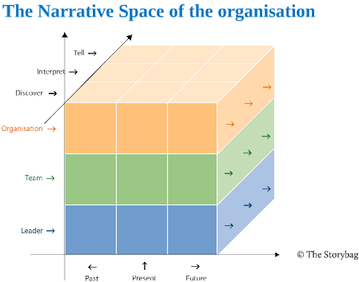Here are two resources that convey a point of view about storytelling in audiovisual fashion.
My friend Karen Dietz turned me on to the 15-minute video, The Arc of Storytelling, noting:
Run, don’t walk to watch this incredibly inspiring video about what we are all searching for in our storytelling.
Even though Bobette Buster is speaking about the entertainment
industry, her words are incredibly important to anyone who is crafting and sharing their business stories.
Bobette talks about the most powerful stories (and this applies to our biz stories) being ones showing transformation, becoming fully alive, and offering hope. When we think about stories in marketing/branding we often forget these fundamentals. The majority of ‘business story’ videos I watch these days totally miss these themes and end up being more like digital brochures than real compelling stories that build a growing cadre of loyal customers.
But think about this for businesses: a founding story of an organization is often about being faced with a challenge and overcoming it — that is showing transformation and offering hope to others.
Business stories about people (customers/staff) and the obstacles they’ve overcome + the results produced offer the same messages.
I could go on and on. It’s better to just watch the 15-minute video. Bobette talked 2 years ago at the Storytelling in Organization’s Special Interest Group (SIO SIG) and was masterful. The book The Uses of Enchantment she cites was a textbook in my PhD program. I’m currently reading Inside Story: The Power of the Transformative Arc, and it dovetails nicely with Bobette’s talk. I hope you get inspired and lots of ideas by watching this.
The other is a Prezi slideshow by Peter Fruhmann called Use your narrative space: How to make better use of stories in organisations by collecting, connecting and sharing.
 The presentation offers for steps for telling the right organizational story: 1) Listen/Collect, the step Fruhmann spends the most time on; 2) Analyze; 3) Synchronize; and 4) Tell/Connect.
The presentation offers for steps for telling the right organizational story: 1) Listen/Collect, the step Fruhmann spends the most time on; 2) Analyze; 3) Synchronize; and 4) Tell/Connect.
He also proposes a 3D matrix (at left) he calls the Narrative Space of the Organization.
Both of these presentations are worth your while.
